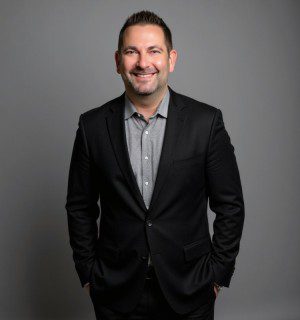News and Insights
Nature, Tech, and Equity: Lessons from Two Leaders in Climate Resilience Communications
October 21, 2025
Last month during New York City Climate Week, I had the privilege of moderating a fascinating panel discussion with two exceptional communications leaders: Kristen Delphos, Vice President of Communications and Public Affairs for UL Research Institutes, and Chris Micolucci, Global Senior Communications Business Partner for Dematic. Our conversation explored how organizations can effectively communicate climate resilience strategies internally – moving beyond compliance-focused messaging to create authentic employee engagement around sustainability.
Unlike broader sustainability or ESG communications, resilience communications focus specifically on how organizations adapt to and prepare for disruption, from extreme weather to supply chain shocks. They emphasize systems thinking, proactive risk mitigation, and the capacity to recover and evolve in the face of change.
What struck me most was how both organizations prioritize storytelling over technical jargon. Kristen shared how UL Research Institutes translates complex safety science into relatable narratives – like explaining why flight attendants ask about lithium-ion batteries in checked luggage. Rather than overwhelming employees with scientific terminology, UL connects the dots between everyday experiences and the organization’s mission to create a safer world. Similarly, Chris explained how Dematic frames sustainability communications around three memorable pillars: People, Planet, and Products. This consistent framework helps Dematic employees across 26 countries understand how their work contributes to broader climate goals, whether through greenhouse gas reduction commitments or innovations like their newly cradle-to-cradle certified Multi-ShuttleⓇ 2 system.
Both leaders emphasized that successful internal sustainability communications start with strong cross-functional partnerships and meeting employees where they are. Chris stressed the importance of building relationships with sustainability teams and inserting communications expertise throughout the organization – acting as an internal reporter to uncover newsworthy stories. Kristen highlighted how UL embeds communications staff in the actual work, sending them to conferences and labs where researchers are conducting experiments, from testing wildfire smoke to burning electric vehicles to ensure safety standards. They’ve also created innovative engagement mechanisms: Dematic leverages a Sustainability Champions Network for grassroots dialogue, while UL uses platforms like Microsoft Viva Engage for informal two-way conversations that reduce barriers to employee feedback.
Equity also plays an important role in how these organizations tell their resilience stories. Inclusive storytelling, such as featuring diverse voices from across job levels, geographies, and backgrounds, helps ensure that climate resilience is not just a top-down mandate but a shared experience. Highlighting how factory technicians, field engineers, and community partners contribute to resilience brings authenticity and representation to the narrative, reinforcing that everyone has a role to play.
Looking ahead, both panelists see the communications landscape evolving significantly. Chris noted regional differences—Europe shifting from compliance to impact storytelling, while U.S. companies continue prioritizing sustainability despite decreased public communications. Kristen brought up AI’s dual role: while it helps researchers analyze data patterns more efficiently, the human element of authentic, emotionally resonant storytelling remains irreplaceable. As we navigate an increasingly complex environmental landscape, these insights remind us that effective climate resilience communications aren’t just about disseminating information – they’re about inspiring hope, empowering employees, and positioning organizations as purpose-driven employers of choice.
Ultimately, resilience communications are about inspiring hope, empowering employees, and positioning organizations as purpose-driven employers of choice.
